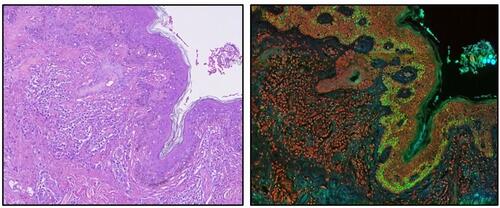Ultrasensitive Graphene Biosensors Detect Cancer Risk Biomarker
By Doris Mendieta, Contributing News Editor
Posted on 06 Oct 2014
An ultrasensitive biosensor utilizing the exceptional electronic and thermal properties of graphene has been used to detect molecules that indicate an increased risk of developing cancer.Posted on 06 Oct 2014
The biosensor has been shown to be more than five times more sensitive than bioassay tests currently in use, and was able to provide results in a matter of minutes, opening up the possibility of a rapid, point-of-care diagnostic tool for patients.

Image: An illustration of an epitaxial graphene channel biosensor for detection of targeted 8-hydroxydeoxyguanosine (8-OHdG) biomarker (Photo courtesy of 2D Materials).
Bioengineers the University of Swansea (UK) developed a viable biosensor by putting graphene onto a silicon carbide substrate under extremely high temperatures and low pressure to form the basis of the biosensor. They patterned graphene devices, using semiconductor processing techniques, before attaching a number of bioreceptor molecules to the graphene devices. These receptors were able to bind to, or target, a specific molecule present in blood, saliva or urine.
The molecule, 8-hydroxydeoxyguanosine (8-OHdG), is produced when DNA is damaged and, in elevated levels, has been linked to an increased risk of developing several cancers. The team used X-ray photoelectron spectroscopy (VG Scienta; Pleasanton, CA, USA) and Raman spectroscopy (Renishaw, Illinois, IL, USA) to confirm that the bioreceptor molecules had attached to the graphene biosensor once fabricated, and then exposed the biosensor to a range of concentrations of 8-OHdG. When 8-OHdG attached to the bioreceptor molecules on the sensor, there was a notable difference in the graphene channel resistance, which the scientists were able to record.
The graphene sensor was capable of detecting 8-OHdG concentrations as low as 0.1 ng/mL which is almost five times more sensitive compared with enzyme-linked immunosorbent assays (ELISAs). The graphene biosensor was also considerably faster at detecting the target molecules, completing the analysis in a matter of minutes. The potential of the biosensor to diagnose and monitor a whole range of diseases as it is quite simple to substitute the specific receptor molecules on the graphene surface.
Owen Guy, PhD, an associate professor of engineering and coauthor of the study, said, “Graphene has superb electronic transport properties and has an intrinsically high surface-to-volume ratio, which make it an ideal material for fabricating biosensors. Now that we've created the first proof-of-concept biosensor using epitaxial graphene, we will look to investigate a range of different biomarkers associated with different diseases and conditions, as well as detecting a number of different biomarkers on the same chip.” The study was published on September 19, 2014, in the journal 2D Materials.
Related Links:
University of Swansea
VG Scienta
Renishaw













